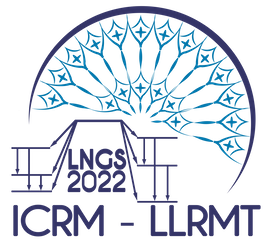Speaker
Description
The aim of this study was testing of performance characteristics and single laboratory validation of a method for measuring I-131, Cs-134 and Cs-137 using high resolution gamma-ray spectrometry with High Purity Germanium (HPGe) detectors. This was the first out of two validation steps for the draft European documentary standard for measurement of I-131, Cs-134 and Cs-137 in animal feed. Development of this standard was requested from European Committee for Standardisation by European Commission (EC) Directorate General for Health and Food Safety (DG SANTE). The EC Joint Research Centre in Geel was given the task to prepare and validate this standard. The main reason for this request from DG SANTE was a concern about the accuracy of low-level measurements that laboratories will have to carry out while testing animal feed originating from Japan as required by the Commission Implementing Regulation 2017/2058.
These three anthropogenic radionuclides can appear in the environment (e.g. water, air, soil). From there, they can be absorbed by plants intended for both human consumption and animal feed. The activity of these radionuclides is therefore being monitored in the environment as elevated levels can be an indication of an emergency situation. One of these radionuclides, namely I-131, is very short-lived (around 8 days half-life) and reaches quickly very low levels of activity. This is the reason for the lack of readily available certified reference materials containing all three radionuclides of interest. Therefore all tests were conducted using spiked reference materials. The spiking method was first tested and proven to provide homogeneous samples [1]. Three different matrices (poultry feed pellets, maize and hay) were first characterised for their original content of radionuclides. Afterwards they were spiked with known amounts of certified radioactive solutions of I-131, Cs-134, and Cs-137 at three activity levels. The homogeneity of the spiked materials was also assessed. The measurements were performed with two HPGe detectors. The measurement protocol described in the "CEN/TC 327/WG 6 N 24" draft standard was followed strictly.
The pre-established in-house validation criteria tested in this study included detection limit calculation, determination of trueness, linearity, range, uncertainty, precision under repeatability conditions, intermediate precision and robustness of the method. All of the criteria were met, which confirms that the method described in this draft standard is fit for the purpose of accurate detection and determination of I-131, Cs-134 and Cs-137 in animal feed.
[1] K. Sobiech-Matura, B. Máté, T. Altzitzoglou. Appl. Radiat. Isot 109 (2016) 126-128

